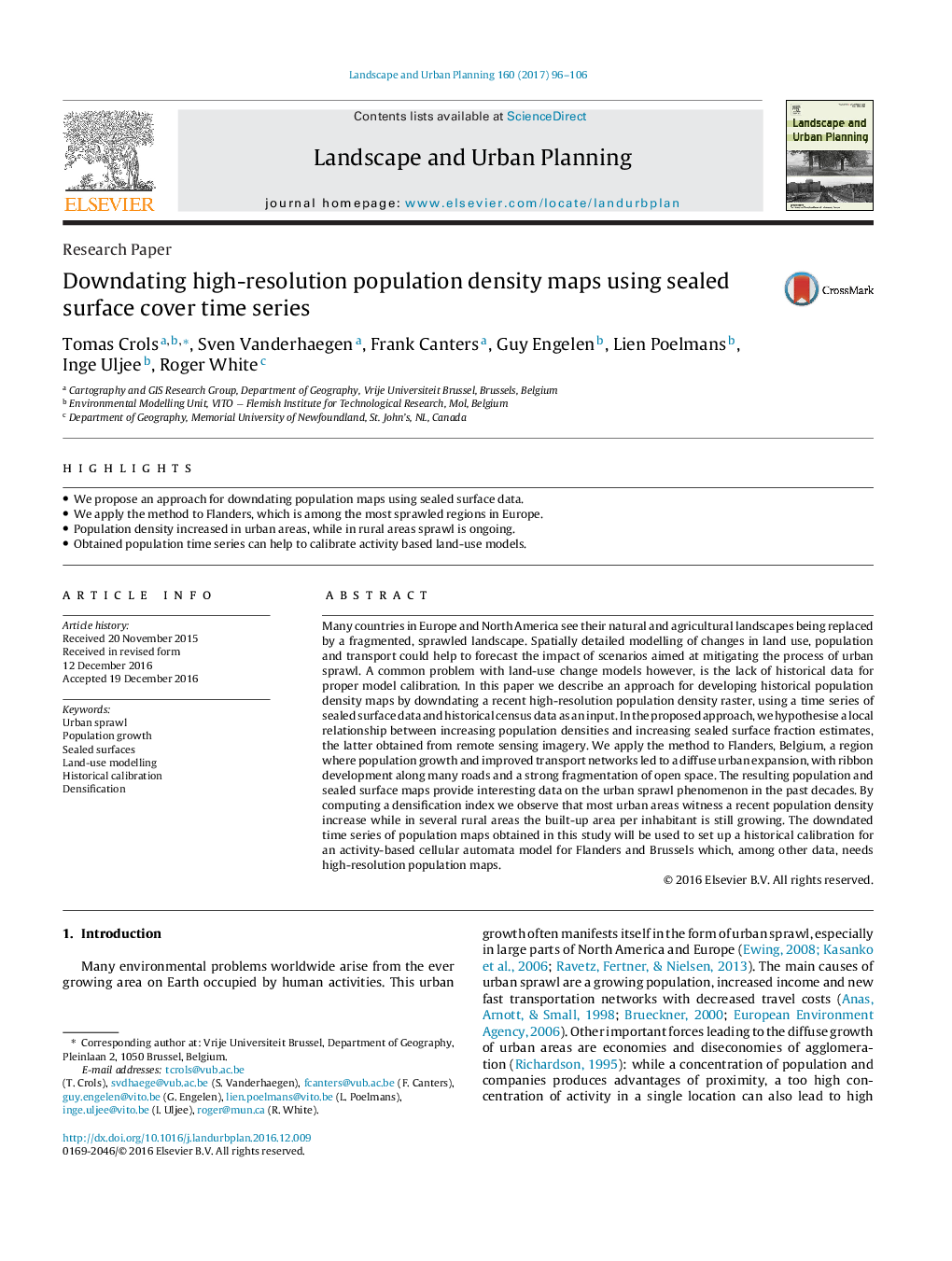| Article ID | Journal | Published Year | Pages | File Type |
|---|---|---|---|---|
| 5115082 | Landscape and Urban Planning | 2017 | 11 Pages |
Abstract
Many countries in Europe and North America see their natural and agricultural landscapes being replaced by a fragmented, sprawled landscape. Spatially detailed modelling of changes in land use, population and transport could help to forecast the impact of scenarios aimed at mitigating the process of urban sprawl. A common problem with land-use change models however, is the lack of historical data for proper model calibration. In this paper we describe an approach for developing historical population density maps by downdating a recent high-resolution population density raster, using a time series of sealed surface data and historical census data as an input. In the proposed approach, we hypothesise a local relationship between increasing population densities and increasing sealed surface fraction estimates, the latter obtained from remote sensing imagery. We apply the method to Flanders, Belgium, a region where population growth and improved transport networks led to a diffuse urban expansion, with ribbon development along many roads and a strong fragmentation of open space. The resulting population and sealed surface maps provide interesting data on the urban sprawl phenomenon in the past decades. By computing a densification index we observe that most urban areas witness a recent population density increase while in several rural areas the built-up area per inhabitant is still growing. The downdated time series of population maps obtained in this study will be used to set up a historical calibration for an activity-based cellular automata model for Flanders and Brussels which, among other data, needs high-resolution population maps.
Related Topics
Life Sciences
Agricultural and Biological Sciences
Ecology, Evolution, Behavior and Systematics
Authors
Tomas Crols, Sven Vanderhaegen, Frank Canters, Guy Engelen, Lien Poelmans, Inge Uljee, Roger White,
